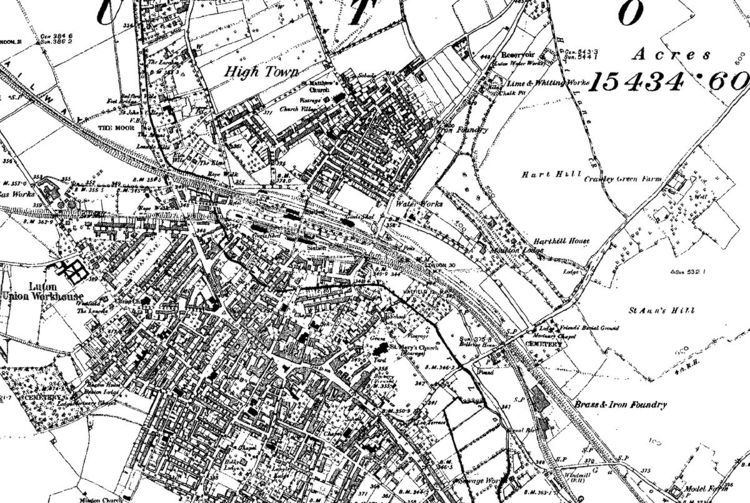Type Workhouse Country England | Location Luton, Bedfordshire Inaugurated 1722 | |
 | ||
Similar Waulud's Bank, St Mary's Church - Luton, Luton Carnival, Wardown Park, Wardown Park Museum | ||
Luton Workhouse was a workhouse situated on Dunstable Road in Luton. Several of the buildings still exist today. Following the introduction of the National Health Service in 1948 the site became St Mary's Hospital and the remaining buildings are now listed and are used as a residential care home for the elderly.
Contents
- Map of Luton Workhouse 28 Dunstable Rd Luton LU1 1DY UK
- Early Workhouses in Bedfordshire
- New Workhouse
- References
Map of Luton Workhouse, 28 Dunstable Rd, Luton LU1 1DY, UK
Early Workhouses in Bedfordshire
There were several workhouses in the Luton and South Bedfordshire area. Luton itself had a workhouse from 1722 which was the subject of a report in An Account of Several Workhouses dated September 17, 1724.
Over the next 50 years the Luton workhouse grew and by 1775 it was able to house up to 80 inmates.
Neighbouring Dunstable had a poorhouse from as early as 1592 located on the High Street. In 1775 it could house up to 20 inmates. In 1795, the poor in Dunstable were "farmed" by a contractor who in 1795 received 3s.6d. a week for each pauper maintained in the workhouse by the time of it closed in 1836, the Dunstable workhouse held 42 inmates.
A workhouse also operated at nearby Caddington from 1725. A parliamentary report of 1777 recorded further workhouses in operation in Eaton Bray and Houghton Regis, both capable of housing up to 20 inmates. A report on the Sundon workhouse in 1718 revealed it to be in a filthy condition.
New Workhouse
The Marquis of Bute, who was a large local landowner and lord of the Manor of Luton petitioned hard for the setting up of the Luton Poor Law Union. Like many large landowners, Lord Bute was keen for his estates to fall within a single moderately-sized union, so as to maximise his influence on the new Board of Guardians. The new Luton Union was formed on 16 April 1835 with its operation overseen by a board of 21 elected guardians who represented the 15 local parishes. The population within the Luton Union at the 1831 census had been 15,483 with parishes ranging in size from Whipsnade (population 204) to Luton (5,683).
These were:
Later Additions from 1896: Hyde, Leagrave, Limbury, Stopsley.
At the first meeting, the Board elected the Marquis of Bute as its Chairman. Lord Bute donated a piece of land on which to erect a new workhouse at the west side of Dunstable Road.
The Poor Law Commissioners appointed John Williams as architect and the building opened in 1836 with space for up to 300 inmates. The building had an unusual layout incorporating elements of two other popular Workhouse layouts, Sampson Kempthorne's square plan and the courtyard plan devised by Sir Francis Head. The original structure had a courtyard-style outer perimeter of two-storeyed accommodation ranges, rooms in the upper storey being accessed by cast-iron galleries attached to the inner sides. The centre of entrance block on Dunstable Road formed the eastern side of a quadrangle and contained the Guardians' board room, offices etc. Males were accommodated at the north side of the workhouse, and females at the south.
